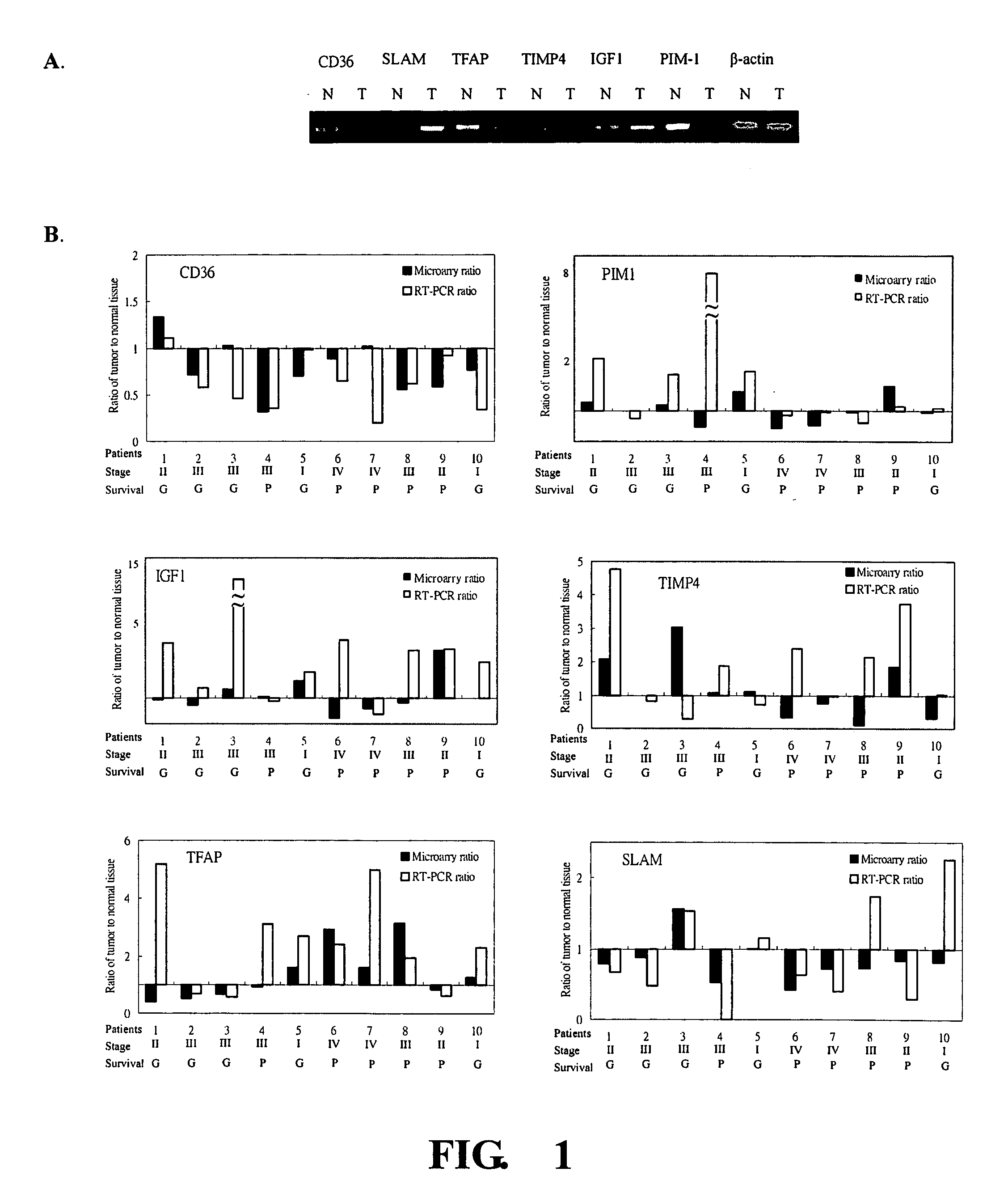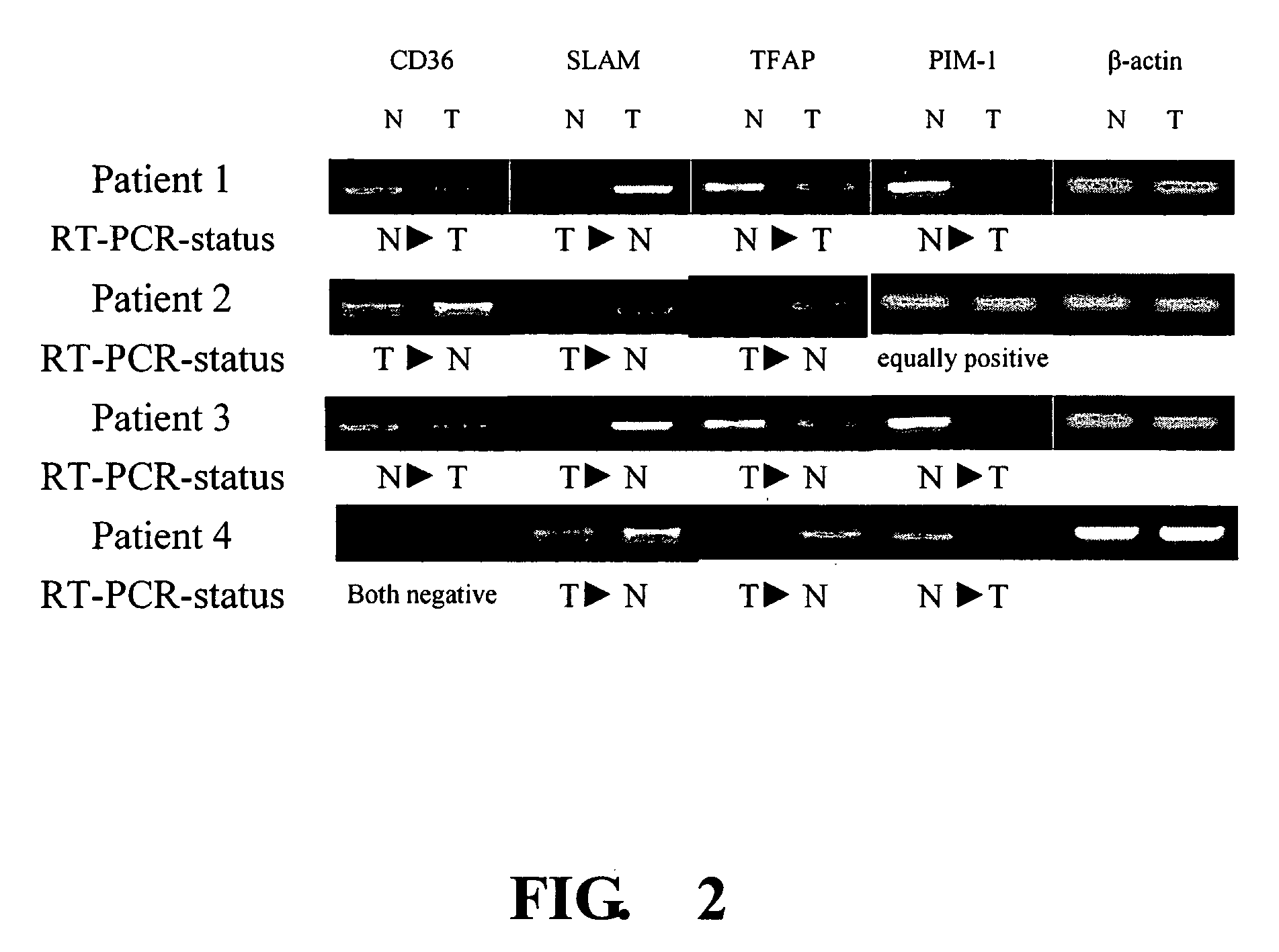Method for survival prediction in gastric cancer patients after surgical operation using gene expression profiles and application thereof
- Summary
- Abstract
- Description
- Claims
- Application Information
AI Technical Summary
Benefits of technology
Problems solved by technology
Method used
Image
Examples
example 1
Prediction Model Determination
[0042] The 18 gastric tissue samples with cancerous and noncancerous pairs were obtained from 18 patients with gastric cancer who underwent D2 gastrectomy without gross residual tumor at the National Taiwan University Hospital. The tumor stage ranged from stage I to stage IV. Nine patients died of tumor recurrence within 12 months after surgery were defined as ‘poor survival’, and the other nine patients survived beyond 30 months after surgery were defined as ‘good survival’. Poor survival group included two patients with stage II, four with stage III, and three with stage IV. Good survival group included three patients with stage I, two with stage II, and four with stage III. There was no stage I patient in poor survival group, and no stage IV patient in good survival group. All patients did not receive postoperative chemotherapy and radiotherapy. Pair samples of tumor and non-tumor tissues of these 18 patients were dissected and frozen in liquid nitr...
example 2
Prediction Model Testing
[0054] The survival prediction model consisting of three genes (CD36, SLAM, PIM-1) developed in the invention was applied in a 30 newly enrolled patients as an independent test group to predict the survival condition. RT-PCR was carried out with the tumor and non-tumor samples from 30 patients to analyze the expression profiles of CD36, SLAM, PIM-1. The RT-PCR statuses of genes were translated into the categorical variables as mentioned in Example 1 to get the frequencies of the 20 genes in the training group. The corresponding frequencies of each gene in each patient were entered into Formula 1 to obtain the survival prediction of the gastric cancer patient after gastrectomy.
[0055] Survival of twenty-three patients (76.7%) were correctly predicted, and yielded a specificity of 80%, a sensitivity of 73.3%, a positive prediction value of 75%, and a negative prediction value of 78.57%. The frequency distribution was showed in Table 1A. This reveals that this ...
PUM
| Property | Measurement | Unit |
|---|---|---|
| Time | aaaaa | aaaaa |
| Length | aaaaa | aaaaa |
| Time | aaaaa | aaaaa |
Abstract
Description
Claims
Application Information
 Login to View More
Login to View More - R&D Engineer
- R&D Manager
- IP Professional
- Industry Leading Data Capabilities
- Powerful AI technology
- Patent DNA Extraction
Browse by: Latest US Patents, China's latest patents, Technical Efficacy Thesaurus, Application Domain, Technology Topic, Popular Technical Reports.
© 2024 PatSnap. All rights reserved.Legal|Privacy policy|Modern Slavery Act Transparency Statement|Sitemap|About US| Contact US: help@patsnap.com










